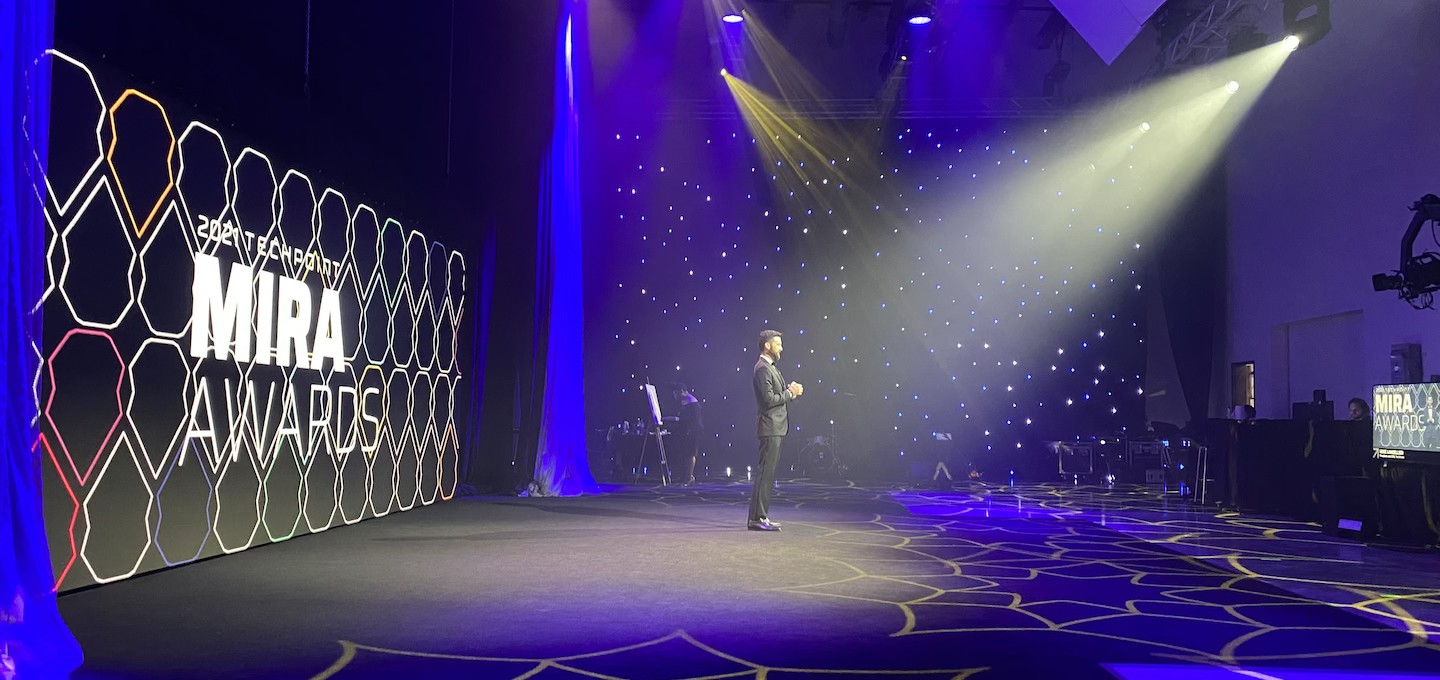4 lessons learned from one year of TechPoint virtual events
The word “pivot” has been used relentlessly throughout the pandemic, and it has been appropriate for most situations. People and companies have had no choice but to change their course of action at work and at home to make it through this challenging situation with some semblance of normalcy. However, “pivot” doesn’t quite cover how it feels when your entire job function has changed overnight. This is the scenario that event managers have had to face across the globe, and while you could say many of us have learned to adapt, it wasn’t always a stress-free or smooth transition.
A little over a year ago, my team was still hoping that the pandemic would resolve itself quickly and we would be able to postpone all of our major events until later in the year when we could all be together. Watching countless webinars about the future of the events industry, I wanted to scream at the panelists saying that there would never be a time when we would return back to “normal.” I remember feeling totally overwhelmed at the thought of trying to replicate our grand in-person experiences through a screen. “It’s just not possible,” I thought. But we soon realized that we had no choice but to dive head first into this virtual world and make the best of it.
Those panelists were right in some ways – while we will surely return to having large in-person events with people eating, drinking, and mingling like it’s 2019 — there are four key lessons gained from a full year of executing virtual events that I don’t want to forget.
1 – It takes a village to plan a virtual event
The biggest piece of advice I have for anyone planning a virtual event is not to do it alone. Our two virtual Mira Awards galas would not have been possible without the help of our exceptional production, print, and entertainment partners. From spotlighting Mira Award winners’ live reactions to the livestream, to sending personalized party packs to attendee doorsteps, to creating video segments that were not only visually engaging but personal to the nominees, these partners enabled us to think bigger and more creatively. They enabled us to bring the show into viewers’ homes in an exciting way.
Vendors like Markey’s Rental and Staging, Tactive, GANGGANG, and Paethos make it their mission to make each client’s big moment a seamless experience, and they do this every day, all year round. Not every event has a dedicated budget to hire all of these partners, but the sentiment remains the same – the more brain power you have to think through your event from different angles, the better it will ultimately be.
2 – Virtual events do not equal less work
I started my job at TechPoint one month before the pandemic shut everything down. I don’t remember exactly what my job description said, but I am certain it did not say “Zoom Technician.” But, this year we all had to commit and get comfortable with technology very quickly. One of the scariest things about virtual events as an event manager is that once the show starts, there’s nothing you can really do other than pray the technology works. You can’t physically guide a speaker to the stage if they’re missing, or greet every attendee at a check-in desk and make sure they have all the materials they need. This does not mean, however, that you just leave everything up to chance.
What you can do is plan further ahead and communicate clear, specific expectations for each role that a person might take at your event. Attendees want to know what they’re getting themselves into before they turn on their webcam. This means you have to commit to a solid platform (or multiple platforms in tandem), and become comfortable with it quickly so that you can communicate far enough in advance that everyone feels confident and relaxed going into the event. This is a best practice habit that won’t ever steer us wrong, even as we go back to in-person events.
3 – Engage with virtual viewers with intentionality
To an extent, I was right – it isn’t possible to replicate the in-person experience exactly, and not every audience member will think virtual events are awesome. In fact, the longer this goes on, the less grace people are willing to give to a mediocre event. That being said, a huge skill that this year has taught us is how to engage with attendees more intentionally. It’s not enough to simply have a great speaker and let them do the talking. You must think like a TV producer–with dynamic graphics, fast-moving video content, bold imagery, and a much quicker program pace.
You can’t please everyone, but you can try to meet them where they are with on-screen CTAs, engaging content, gamification and social media. There’s a fine line between making your virtual event interactive and distracting attendees from the message on screen, but we all know people are multitasking anyway, so why not make it fun? Even though we’ve been working in 2D, I believe this mindset will empower us to create more engaging 3D experiences as well.
4 – Make your virtual event experience personal
One common complaint about pandemic life is the impersonal nature of interacting solely through a screen. For this reason, and because we believe our community deserves to be celebrated, we made it our goal to make our virtual events as personal and inclusive as possible. Without the constraints of venue capacity limitations, we were able to broadcast the Mira Awards gala to thousands more people than was possible before. More importantly, though, we approached every single aspect of the program with the lens of, “How can we make the attendee feel like this was made just for them?”
Here are a few ideas:
- We wrote the program script in a way that felt like we were speaking directly to each person.
- We showcased video clips and team photos submitted by nominees and judges.
- We hired entertainers who would speak to the moment we’re all experiencing and represent a more diverse audience.
- And, we made sure each winner enjoyed their time to shine.
The more you can make an event about the audience members and less about a sales pitch or your company’s next big thing, the happier your attendees will be. Remember, without them, there is no event.
Ultimately, while I look forward to clinking glasses face-to-face and meeting many of my professional contacts with whom I have only communicated via email or Zoom chat, I won’t look back on this virtual year with any regret. This year people have been more open, collaborative, and willing to lend advice and a helping hand than ever before. I hope that spirit continues as we re-enter the “real world.”




